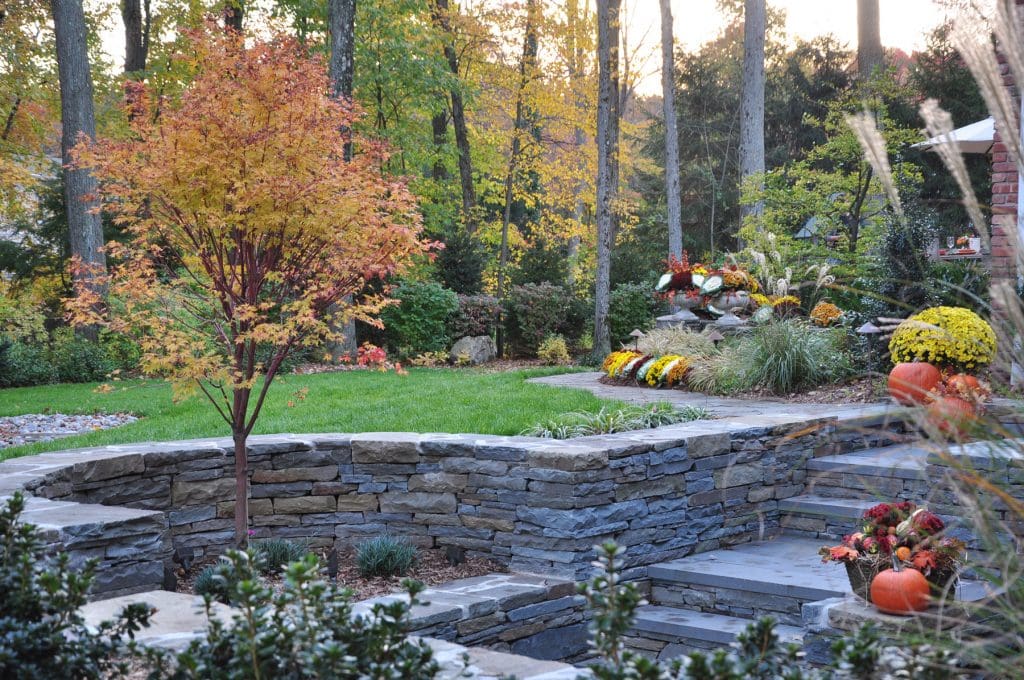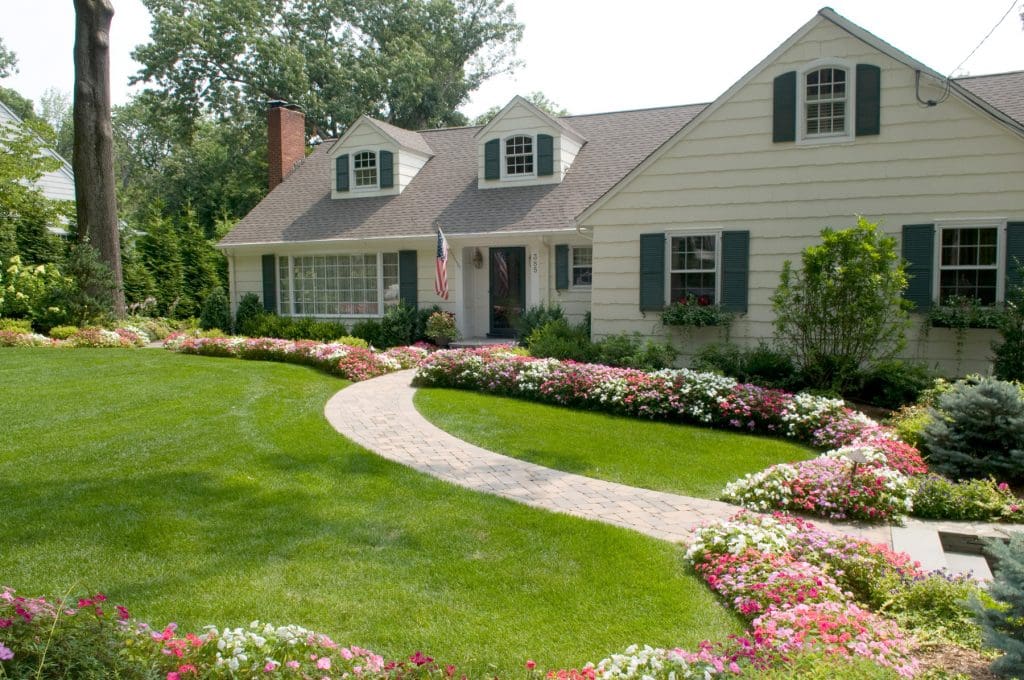Now that summer is wrapping up, it’s time to consider what you want your Bergen County, NJ home’s yard to look like in the fall, winter, and beyond. It’s important to have a balanced landscape plan that will look great in all four seasons. The most common and traditional way of maintaining a beautiful landscape is to plant conifers because they remain nearly the same throughout the year. However, there are many other options for maintaining a landscape with four-season interest in a fun and unique way.
Staggered Planting Plan
One of the best strategies for keeping your yard beautiful throughout the year is learning when particular plants look their best. You can use this knowledge to create a staggered planting plan. Rather than having your entire yard bloom at the same time and look its best only in spring or summer, formulating the right planting plan will ensure that you will always have a time of the year when some of your plants look the best. The right plan will keep your yard looking its best year-round. This type of year-round plan is called a “staggered” planting plan and it will distribute the beauty of your landscape across all four seasons as equally as possible.
Maintaining Four-Season Interest
There are many considerations to take into account when determining what to plant in your yard to keep it looking its best year-round. The first thing you should do is take a step back and look at the big picture. Approach your landscape with the eye of an artist and determine if the yard as a whole is giving you what you desire.
Taking this kind of approach means you should also be aware of size, shape, color and texture of each aspect of your landscape and how they work with every other aspect in the space. When considering size, try to imagine what a plant will look like when it is fully grown and how it will fill a space in the future. In addition to just size, shape should also be considered for each individual bush, shrub, or tree. Some spaces on your property call for a slender plant while others may call for a plant with a rounder and more robust shape. Color is another characteristic that should be considered. Determine not only what color each plant will be in the future when it blooms, but how this color fits into your overall picture and how it plays with every other element. Lastly, the texture of an individual plant is not to be overlooked. For example, a shiny leaf paired next to a brushed spiked needle is something that may appeal to you, but not to others. Carefully consider how the size, shape, color and texture of each plant will appear throughout each of the four seasons. A landscaping expert like those at Borst Landscape and Design can help you design your dream yard while taking all these factors into consideration.
Spring Season
Now that you know some of the basics of year-round landscape design, we can begin to focus on how to keep your yard looking its best throughout each individual season. In the spring, what most people want to see is color, and lots of it. Forsythias can help cheer you up as we exit the winter season, because they bloom in the early spring. Since most flowers bloom in mid-spring, you are nearly limitless in what you can choose for this period. For late spring color, focus on late bloomers like lilacs, mountain laurels, and hawthorns.
Summer Season
Often during the summer, brilliant blooms on plants will give way to leaves that don’t look nearly as impressive or beautiful. However, there are several plants that will keep their beautiful look throughout the summer including hydrangeas and rose of Sharon.
Fall Season

Floral colors dominate the spring and summer seasons, but they always give way to foliage colors in the fall. To help your yard make the transition from late summer to early fall, sumac shrubs are a great choice. They will carry you through from the last rose of Sharon bloom to the first color on your maple trees. Speaking of maple trees, they are a classic addition to any collection of fall foliage but their best color will only last through about mid-October. Oak trees last a bit longer and will help get you through to winter, but their color is a bit less impressive than maples.
Winter Season
Finally, the most difficult season to plant for inevitably arrives. The classic evergreen conifers are always a good choice to maintain some green throughout the winter but there are many other options to choose from. Red osier dogwood trees can provide a hint of color to a bleak winter landscape with their red bark. One of the most impressive shrubs for the winter season is Harry Lauder’s walking stick. This plant is also called a “contorted hazelnut” or “corkscrew filbert” and its unique branches will have neighbors and visitors talking and looking on in envy. Remember that during the winter season, shape and size become more important to landscape design as most of the color fades away. The lack of leaves on most of your plants will highlight the attention to detail (or lack thereof) you have paid to these considerations.
Now that you know how to maintain a yard both in general and throughout all four seasons, you may find it a little easier to plan out your Bergen County front or back yard and keep it looking its best all year long. If you’re still feeling a bit overwhelmed, the experts at Borst Landscape and Design can help. We’ve been helping northern NJ homeowners maintain four season interest in their yards for over 25 years. Contact Borst online or give us a call at 201-785-9400 today!
The post The Four Seasons of NJ Landscaping appeared first on Borst Landscape & Design.
from RSSMix.com Mix ID 8230377 https://ift.tt/2wQQjdS
via IFTTT

No comments:
Post a Comment